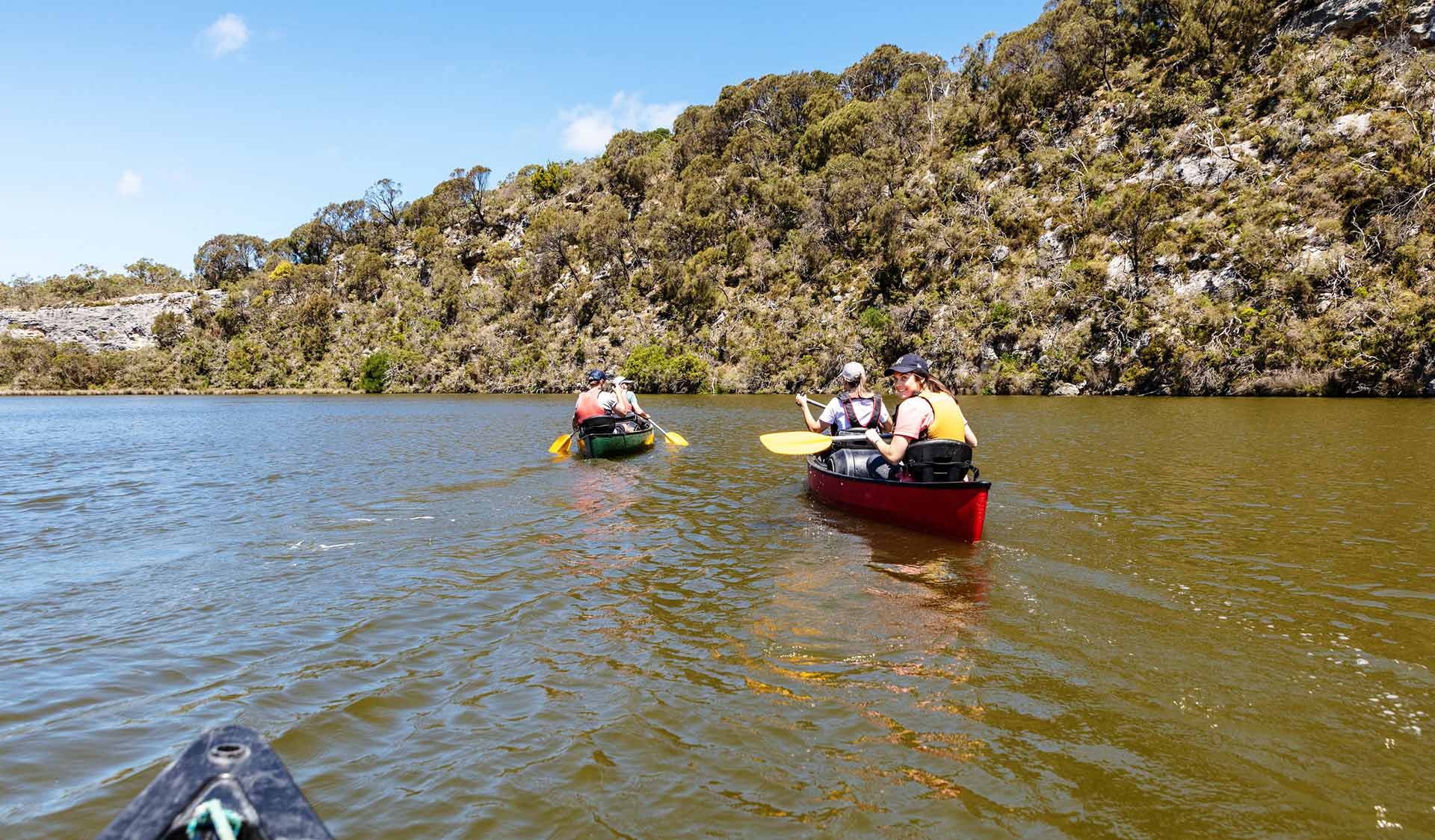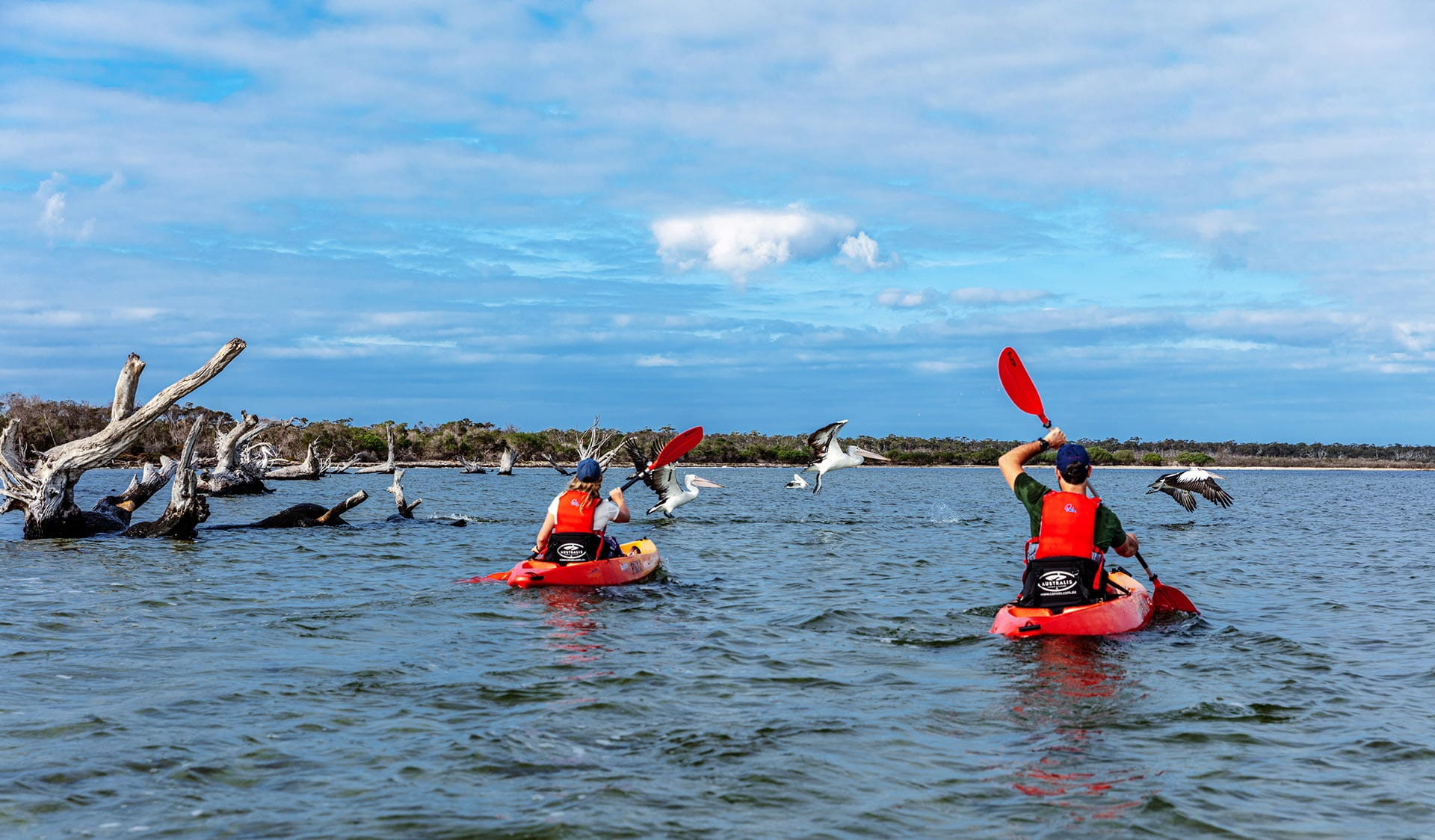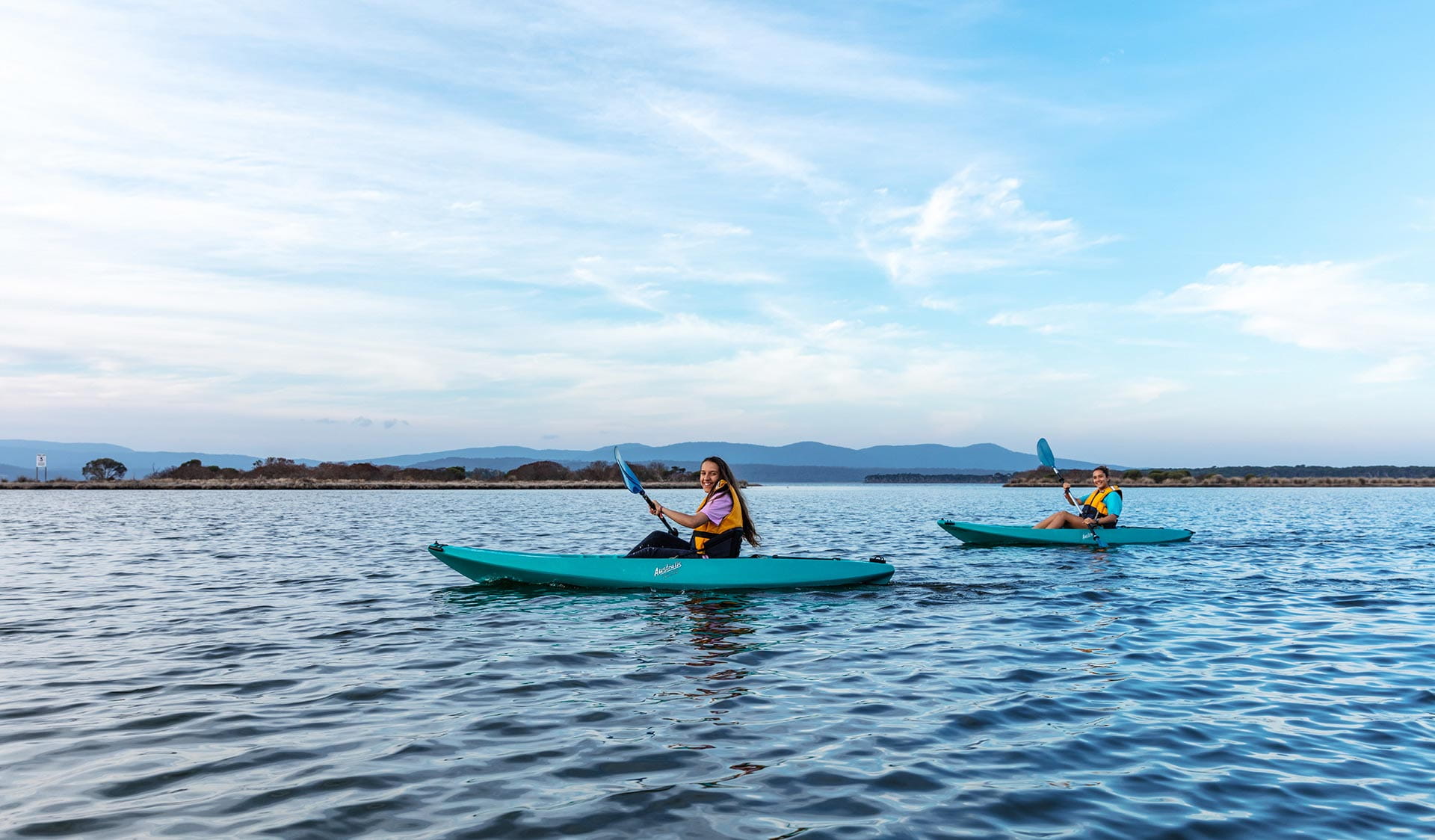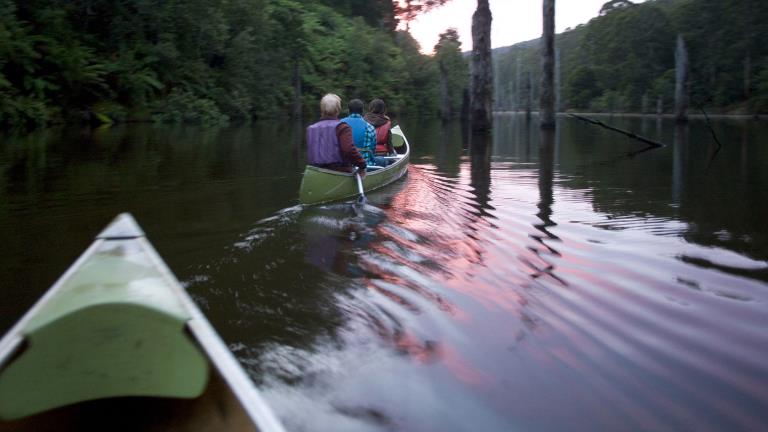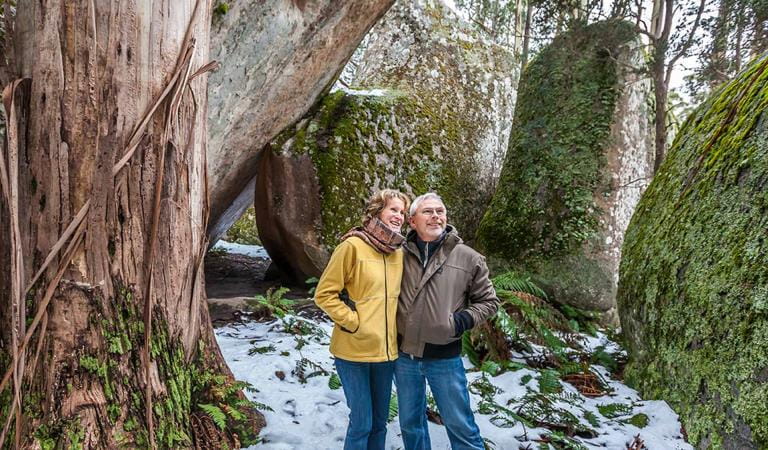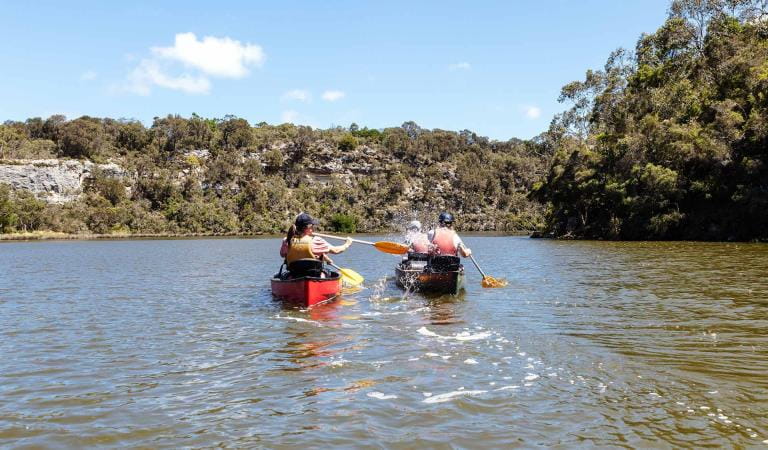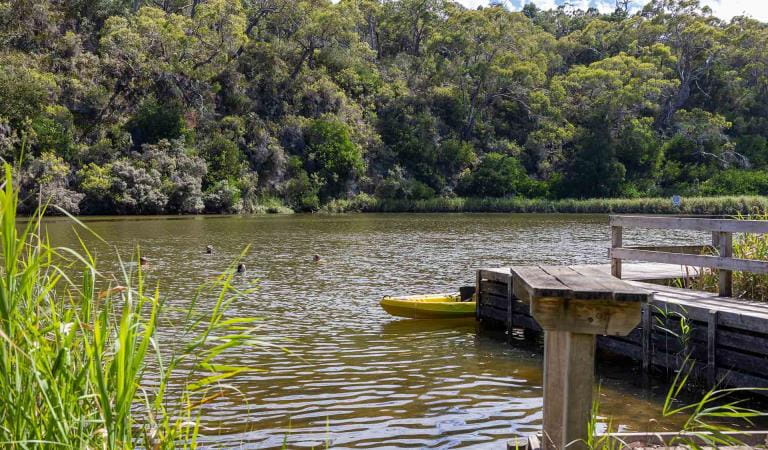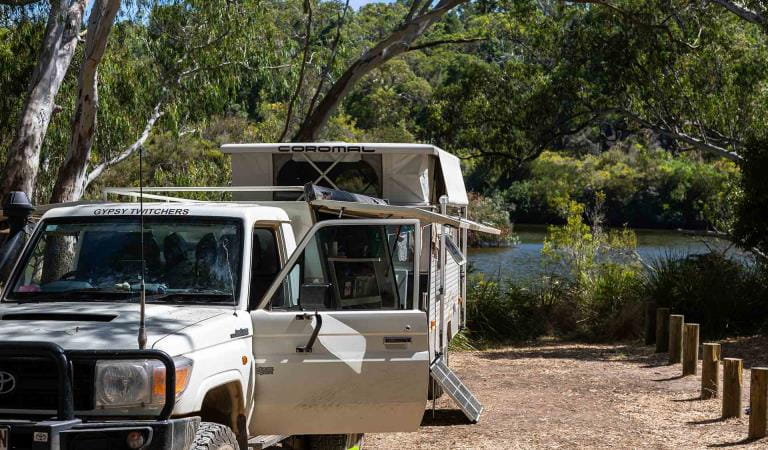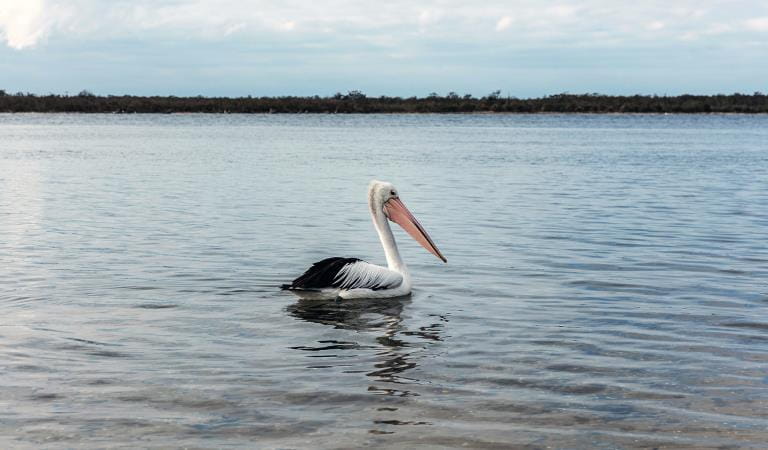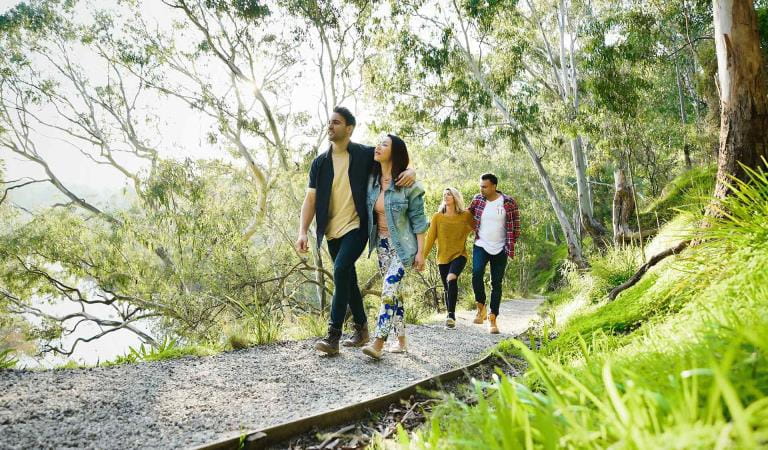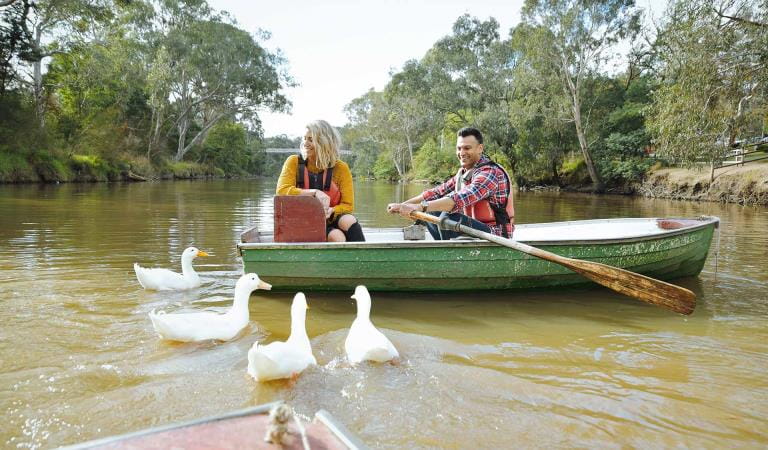Explore
Best Rivers to Canoe
Canoeing creates many opportunities for exploring, photographing wildlife and sunlit landscapes, a healthy workout and fishing. Spend a few hours on the weekend or a week or more on the water. The best time for canoeing is September to April. Get your canoe ready, dust off your life jacket and check out some of the best rivers in the state.
Yarra River - Warrandyte State Park, the closest State Park to Melbourne, 24km east of the city, is lightly wooded and dominated by the Yarra River. The journey from the canoe access ramp at Wittons Reserve (Mount Lofty) to Jumping Creek Reserve is about six hours, so allow sufficient time for this activity. There are also other access ramps at Jumping Creek Reserve and Pound Bend Reserve.
There's a good chance of seeing koalas in the trees at Pound Bend Reserve, while kangaroos and other wildlife are not uncommon in sections of the park.
Murray River – Barmah National Park lies along the Murray River between the towns of Barmah and Strathmerton, about 225km north of Melbourne. Access to the 12 major entrance gates is available from the Moira Lakes Road, Barmah-Picola Road, and the Murray Valley Highway.
From the flowing Murray River, the secluded creeks or Barmah Lake, there's so much to discover. These Ramsar-listed wetlands are a haven for waterbirds and great for fishing, visitors will experience the incredible wildlife and bushland from a whole new perspective.
All four canoe trails at Barmah National Park have easy water access. To start, consider this one: Picnic Point to Barmah Lakes day visitor area (17.4km, one-way, 3 hours 30 minutes)
Push off from Picnic Point and follow the mighty Murray downstream through the mouth of Barmah Lake. Stop by Swifts campground for a picnic.
Check Murray River water levels and flow rates before setting out, as these can affect paddling time. The Murray River is safe and best to paddle when water levels are between 1.4m-2.4m.
Glenelg River - Lower Glenelg National Park is in south-west Victoria adjoining the South Australian border, about 420km from Melbourne. The Glenelg River offers excellent opportunities for flat water canoeing over the 75km from Dartmoor to its mouth near Nelson. Through the Lower Glenelg National Park, the river passes diverse wildlife.
Canoes can be hired from Nelson and Dartmoor/Winnap and taken either upstream or downstream.
The most popular canoe trip is the three-day paddle from Moleside to Nelson. If travelling downstream, the last day of canoeing near Nelson can be affected by incoming tides and winds, which may slow progress. Camping is available.
Snowy River - The Snowy River in Eastern Victoria offers thrilling canoeing with rugged gorges, rapids, and flat sections with sand bars and beautiful scenery. Snowy River National Park is 390km from Melbourne, and can be reached on the Princess Highway from either Buchan or Orbost.
The most popular section for canoeing is from McKillops Bridge to Balley Hooley at the Buchan River junction, which takes three to four days to complete, and the gentle sloping sandbars provide ideal camping spots.
Mitchell River National Park – Mitchell River National Park is 320km east of Melbourne and 25km northwest of Bairnsdale. The river divides the park into two sections. From the Princes Hwy, approach the western section via Lindenow or Fernbank along the Bairnsdale‐Dargo Road to Waller Road. Access the eastern section via the Glenaladale Road and Weir Lane.
The park is an exciting destination for outdoor enthusiasts and boasts unspoilt natural beauty and remoteness. Canoeing or rafting provides the easiest access to much of the park. The Mitchell River offers the canoeist short day trips or extended touring through tranquil pools and turbulent rapids down to the Gippsland Lakes. The best time for canoeing in this river is from July to December.
Thomson River in the Baw Baw National Park, about 120km east of Melbourne and 50km north of the Latrobe Valley. Whether shooting the rapids on the Thomson River or skiing a cross country trail, Baw Baw National Park offers a wealth of natural experiences.
The Thomson River is excellent for canoeing and rafting on Grade 3 water. The best river levels depend on water releases from the Thomson Dam. Canoes can be launched at Beardmores Track, Low Saddle Track (4WD only) or at the Narrows. There are no riverside camping facilities in the park.
The Goulburn River, in the Lower Goulburn National Park, downstream from Shepparton, is a haven for flora and fauna and there are varied sections of rapids and flat paddling areas. Enthusiasts should be wary that this river sometimes poses major hazards with trees and other snags that abound in the river. Canoeing is popular because conditions are enhanced by the summer releases of water from Lake Eildon.
Always remember to keep safe on the water and outdoors:
- Anyone considering visiting the canoe trails around Victoria will need to be able to swim
- Have a medium level of fitness
- Always wear a life jacket
- Always carry the right safety gear


